
Review: A rebrand is born
Nvidia is a company well known for its rebranding, and its latest product is definitely nothing new to this tradition. Since June time, when the company released the GT200 series of really new chips, they only had some optical shrink products in 55nm, and no truly new GPUs.
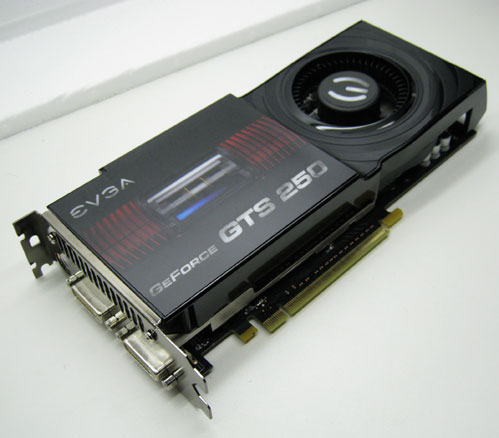
Geforce GTS 250 is based on the G92b chip, the 55nm successor of the 65nm G92 chip. The 55nm G92b was launched as Geforce 9800 GTX+ and Nvidia now claims that this new card is an upgrade to this good old card. The Geforce 9800 GTX+ was launched in June and it was selling for $229 for 512MB card and Nvidia dreams that the „new“ Geforce GTS 250 with almost the same clocks and specs with 1GB will be selling for $149 plus tax, and $129 plus tax for the 512MB version. We don't believe that this is possible at this time, but eventually you should be able to buy these cards at this price.
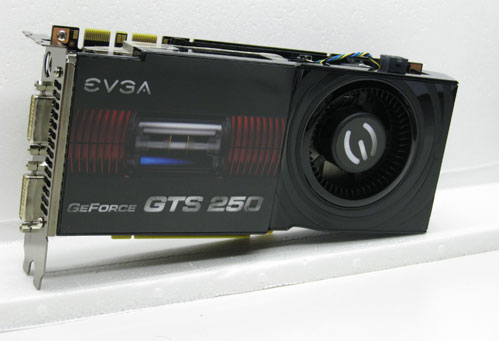
The first thing that you should know about the Geforce GTS 250 is that this is a cost-down version of 9800 GTX+ card. The card's PCB is smaller (9 inch long compared to 10.5 inch), and we were informed that this card is about $15 cheaper to produce than the 9800GTX+.
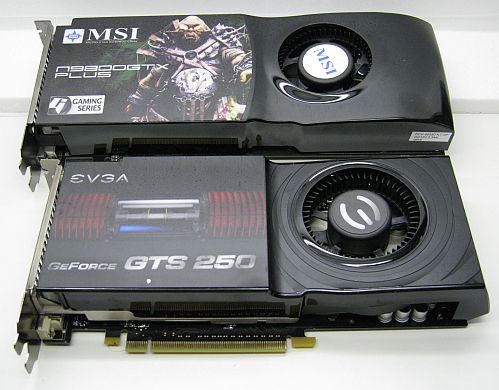
The card is clocked at 738MHz core, 1836 MHz shaders and 2200 MHz for the 256-bit GDDR3 memory. The overclocked EVGA Geforce GTS 250 SC (Superclocked) is clocked at 774MHz core, 1890MHz for shaders and 2246Mhz memory.
The card looks almost the same, although it has better thermal characteristics, and we were informed that some of the cost down 9800 GTX+ that were selling in October were almost identical to what Nvidia now calls Geforce GTS 250.

Geforce GTS 250 is based on the G92b chip, the 55nm successor of the 65nm G92 chip.
The “new” GTS 250 has a single six-pin PCIe power connector, while the 9800GTX+ normally has two.
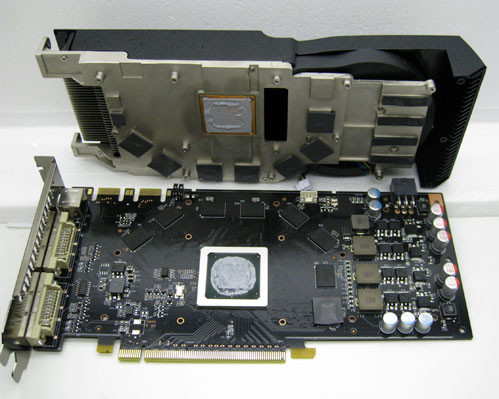
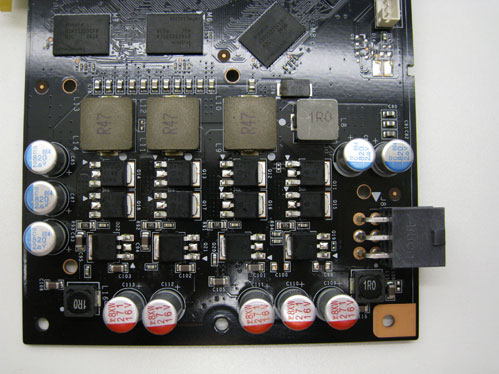
One PCI-Express 6-pin power connector on GTS 250 card.
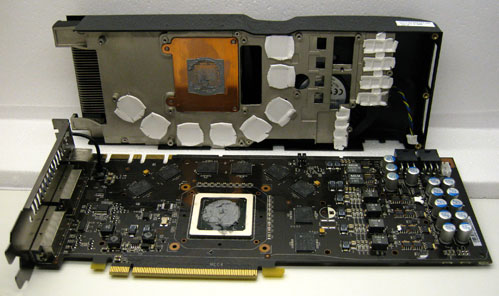
The maximum TDP is rated at 150W, and as the card has 75W from the PCIe slot, and gets 75W from a six pin PCie connector, it should have enough power.
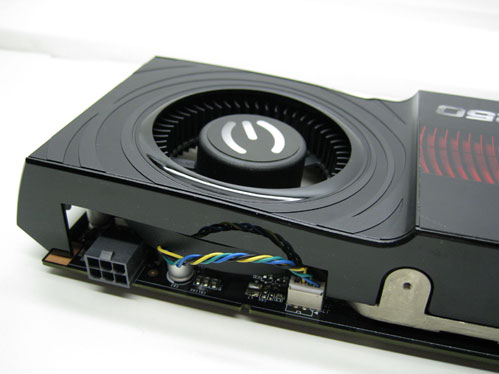
As you can see, the card is two slots wide and the cooler is quiet. Nvidia is betting that 1024MB memory should help you in AA and in very high resolutions.
Combining GTS 250 and 9800 GTX+ cards in SLI we can get better performance. It is supposed to work, but we did not have time to check this out (bear in mind that you can't mix a 512MB and a 1024MB card).
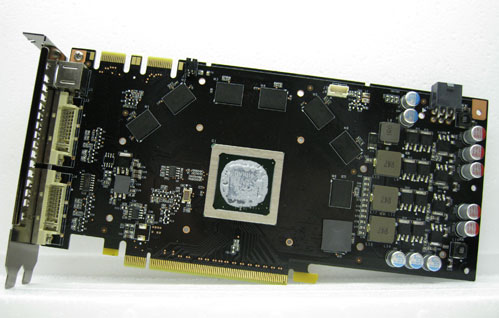
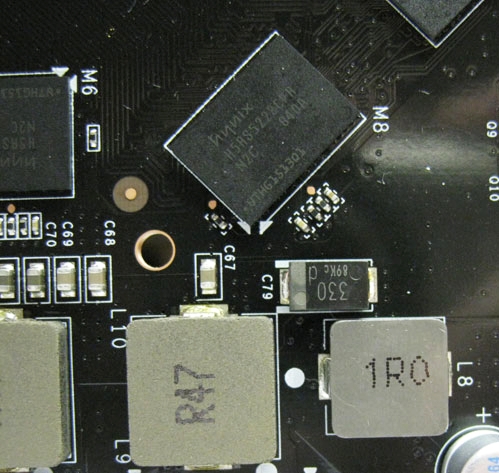
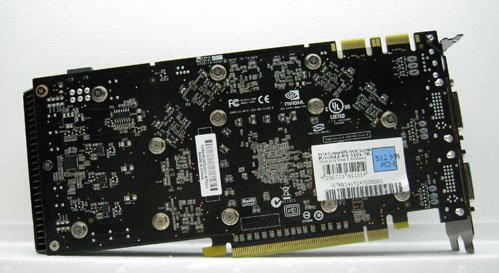
Nvidia has some nice features implemented in its recent Geforce cards, such as PhysicX and CUDA. One of the latest toys you can play with usin Geforce GTS 250 is Arcsoft's Total Media Theatre which uses CUDA technology to deliver excellent high-definition video on your PC. This is a DirectX 10 card with PCIE 2.0 support.
To check out the performance of the GTS 250 512MB, we used HD 4850 512MB, and the older 9800 GTX+ 512MB card. The new GTS 250 also comes with 1GB of GDDR3 memory which can help when playing in high resolutions.
Futuremark Tests
Our first test, 3DMark 06, showed us a huge advantage for the GTS 250 over ATI's HD 4850 card, but in 3DMark Vantage test the real life difference comes to the screen.
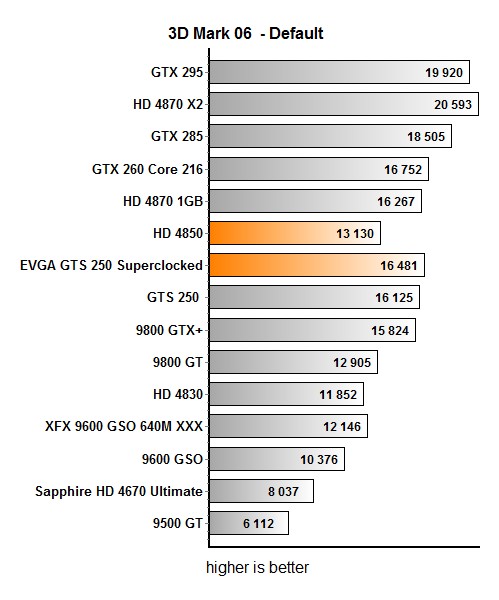
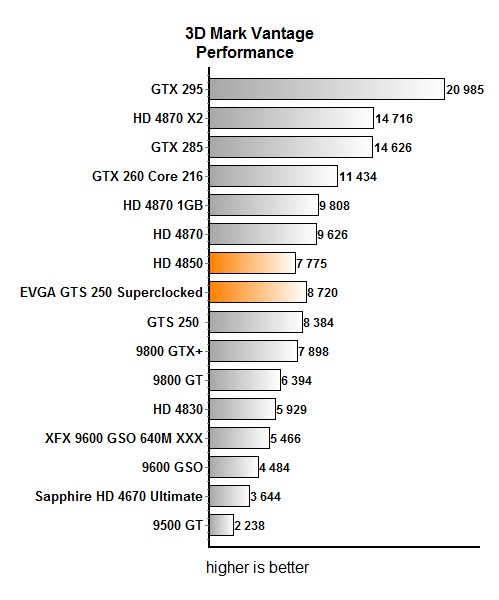
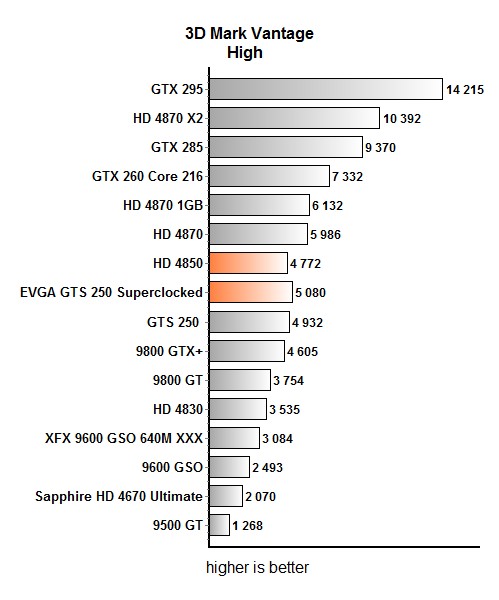
Radeon HD 4850 512MB took the lead after we switched to Extreme settings.
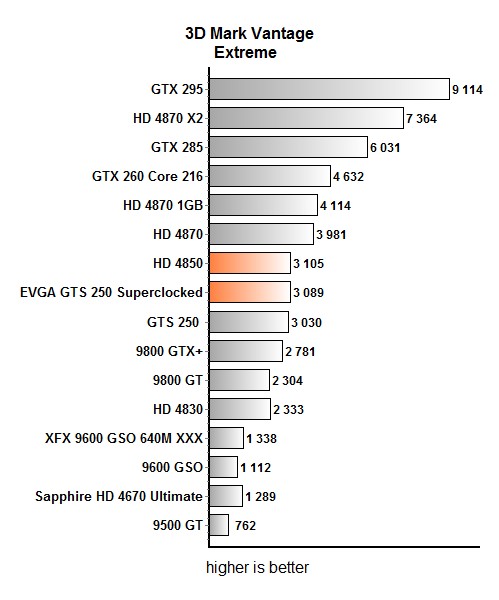
Games
Far Cry 2
Here we can see GTS 250 in a hard battle for leadership. EVGA's GTS 250 Superclocked card is better than HD 4850 when playing on lower resolutions, but after switching to 1920x1200, things changed and the Radeon HD 4850 took the lead again, just like in the previous 3DMark Vantage test.
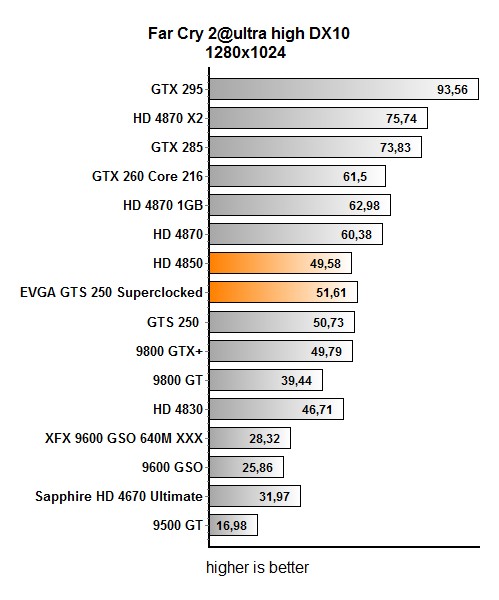
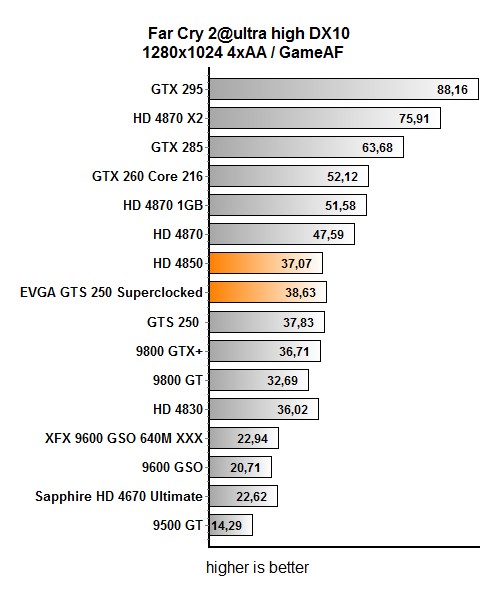
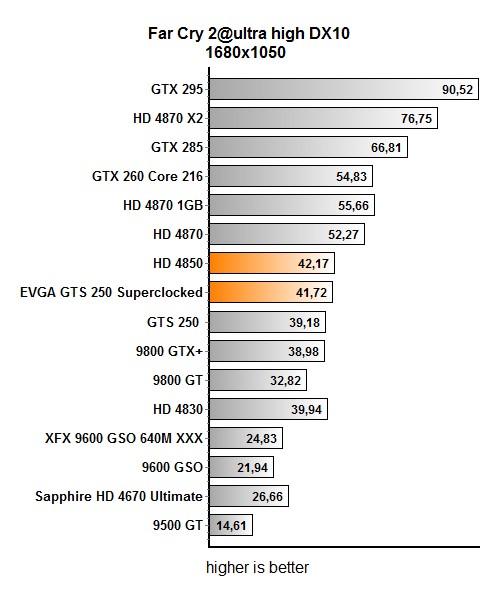
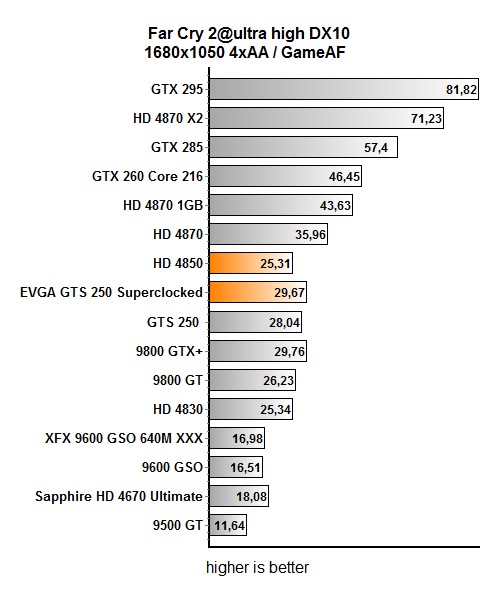
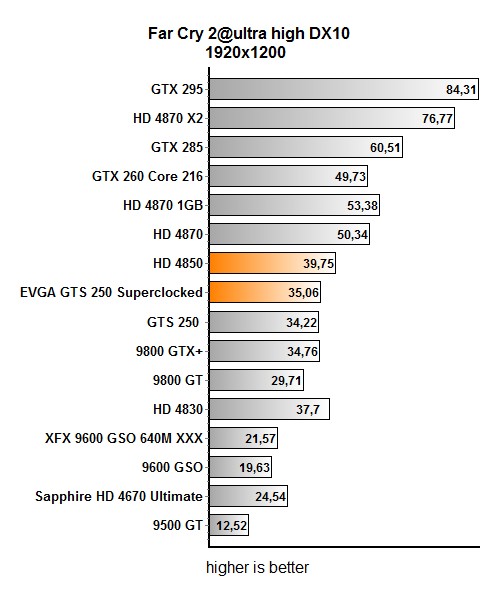
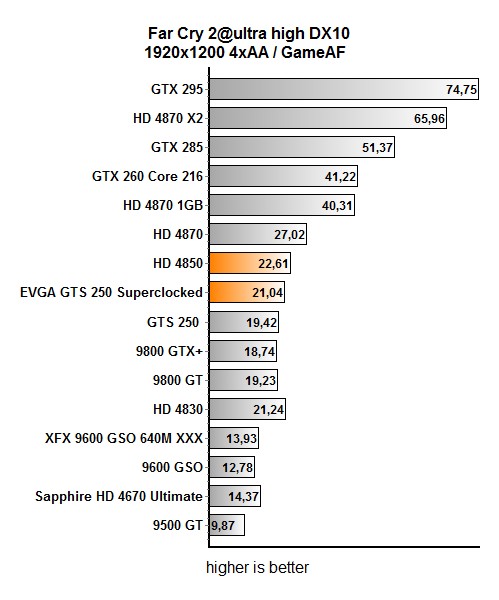
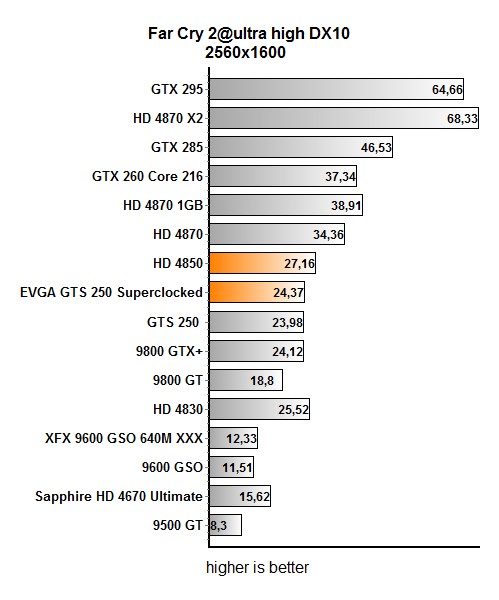
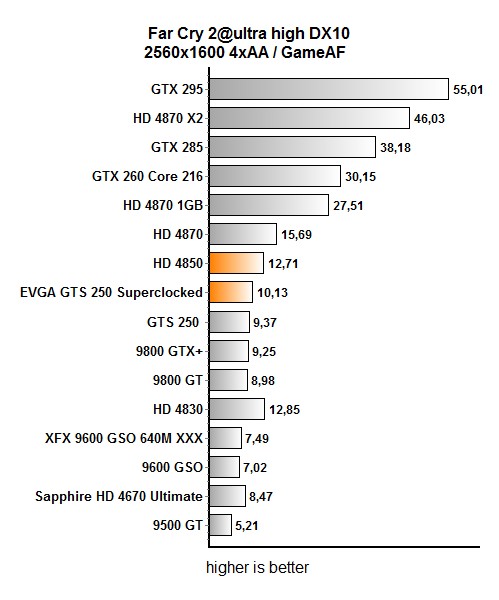
Left 4 Dead
Now, after we changed to another popular game, Left 4 Dead, Radeon HD 4850 proved it wasn't so hard to beat, and even the reference GTS 250 is better in all resolutions.
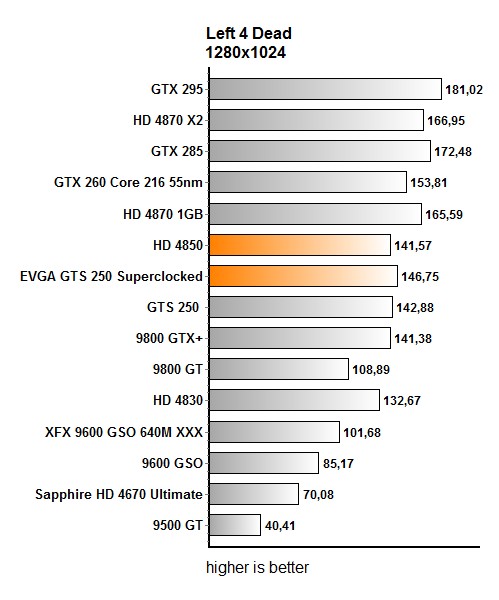
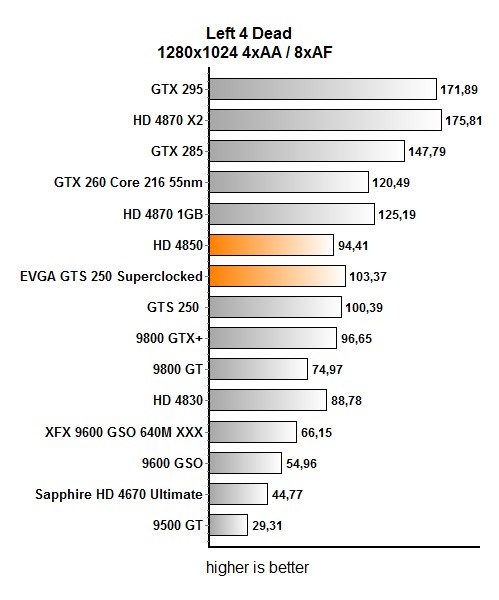
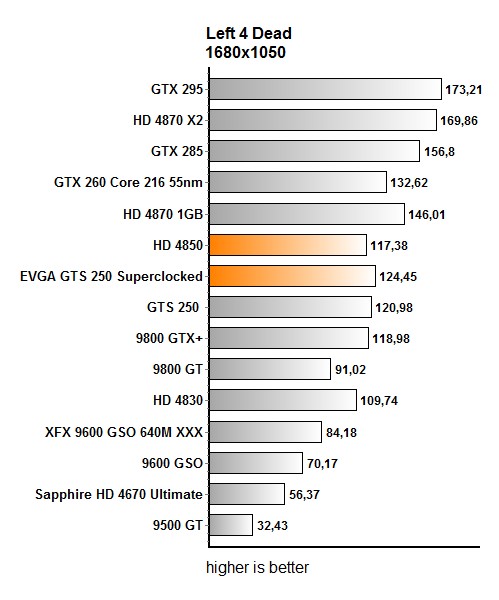
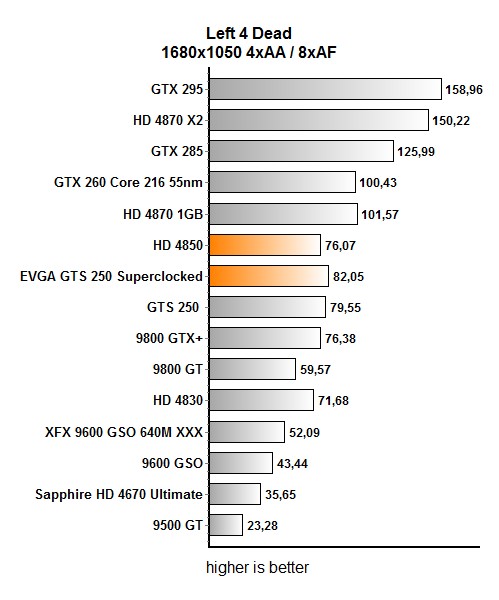
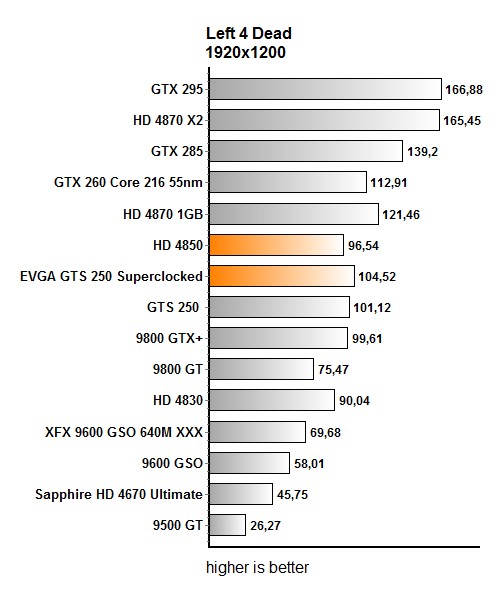
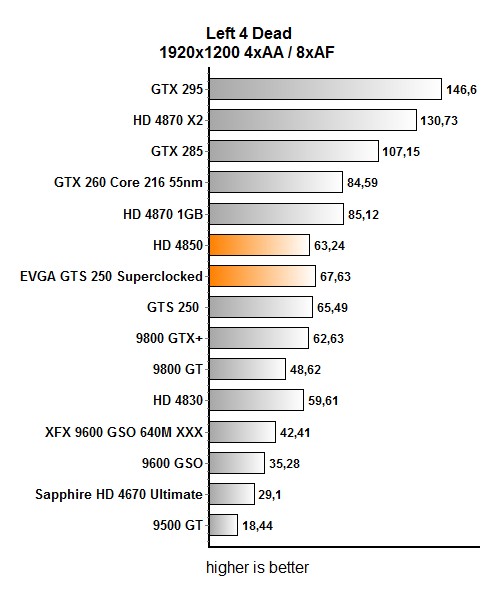
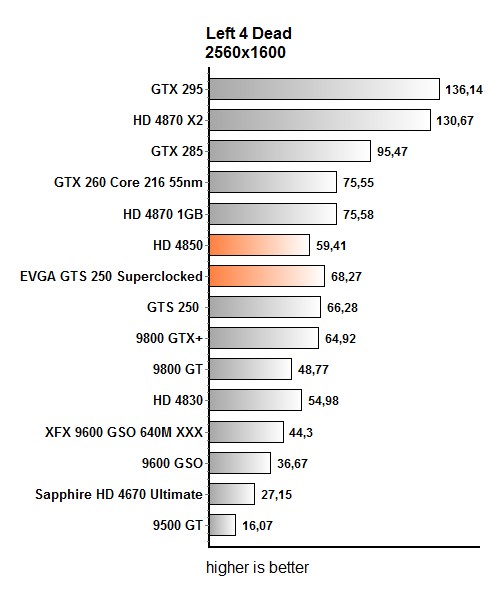
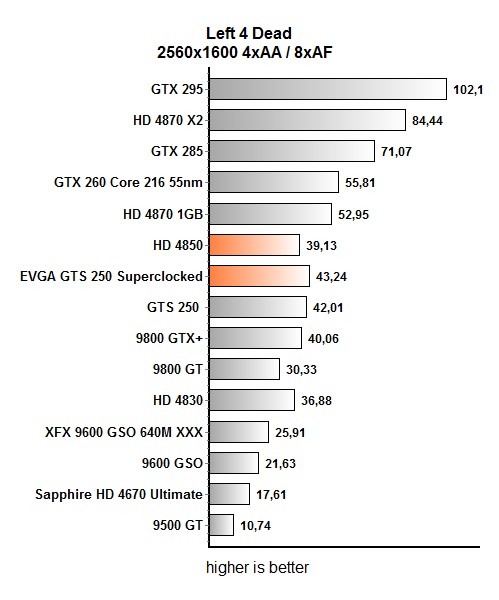
World in Conflict
All the way up to the unplayable resolutions, the GTS 250 is better than Radeon HD 4850. But, when put under some hard pressure at 2560x1200, combined with AA, the Radeon shows its teeth and scores better.


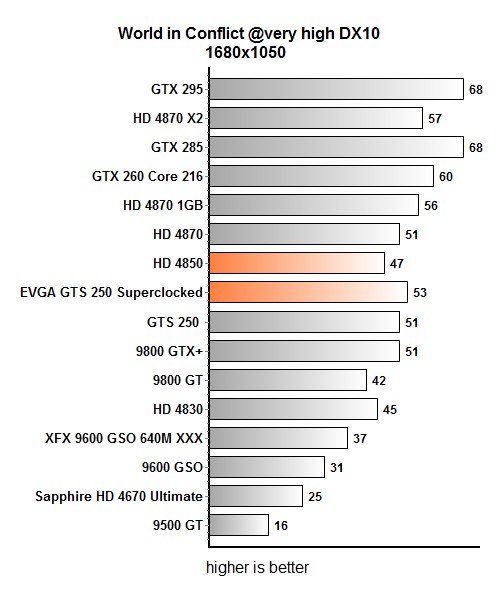
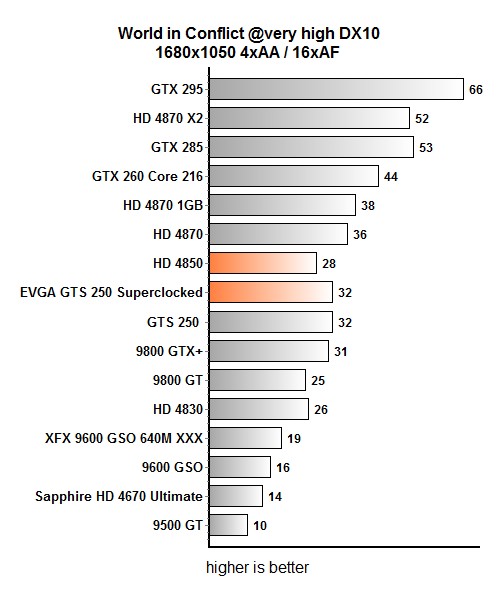
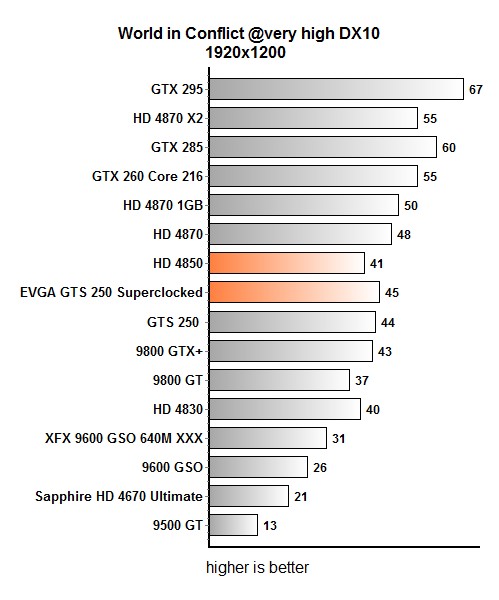
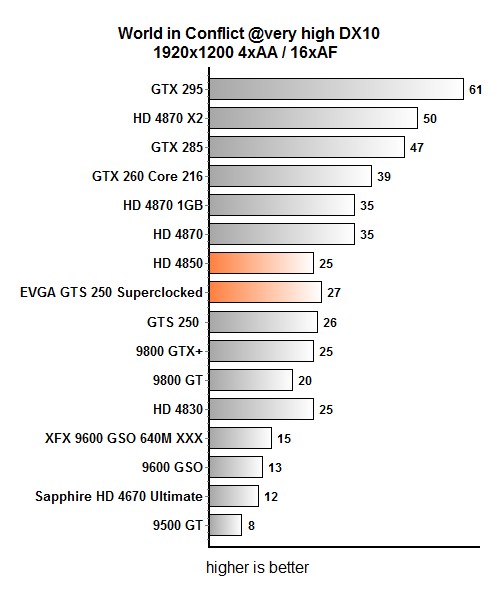
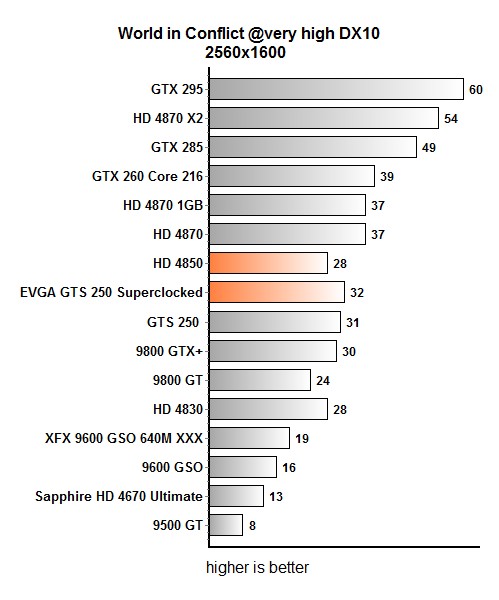
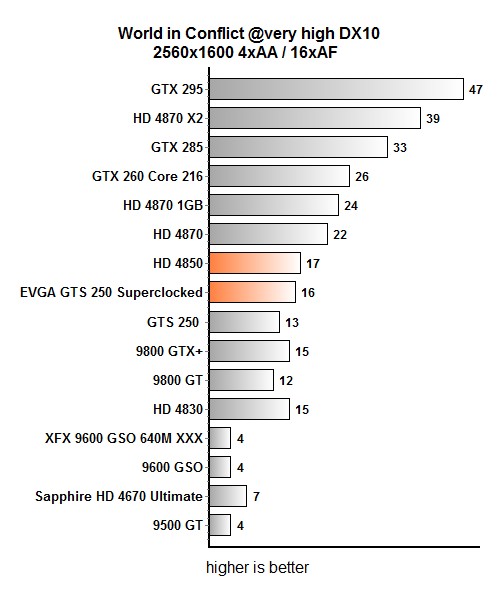
On the termal side, we saw the GTS 250 is much better than the HD 4850 (which has single slot cooler).
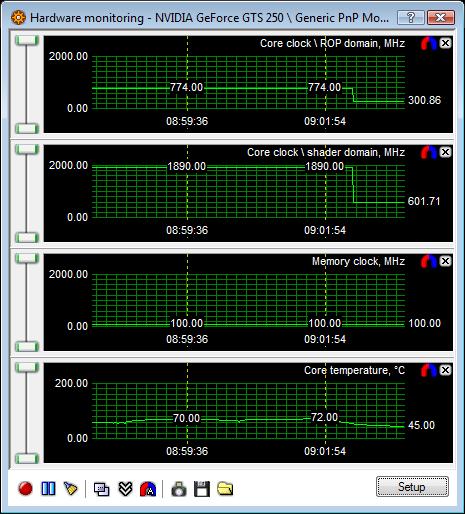
Geforce GTS 250 card draws about 10W to 20W less than the 9800 GTX+.
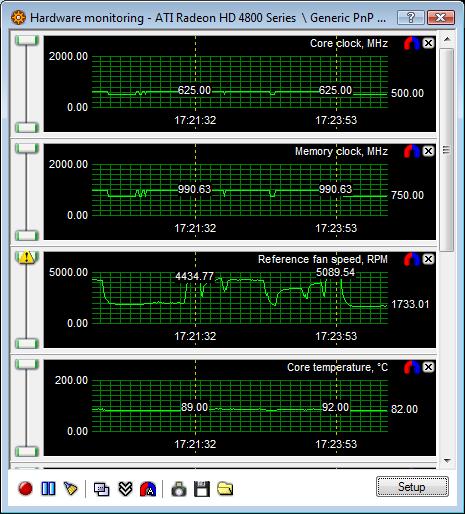
Conclusion
We faced an interesting graphic card today, EVGA's GTS 250 Superclocked, based on the G92b chip, the 55nm successor of the 65nm G92 chip. It runs at 774MHz core, compared to the reference 738MHz, and it features 512MB of memory clocked at 2246MHz on a 256-bit bus.
It is less noisy than the Geforce 9800 GTX+ and scores a few frames more, but the price of the card is what stops us from recommending it right now. Nvidia is also launching other GTS 250 cards with 1024MB of memory, something a bit more attractive as far as we are concerned, and it might be a hot sell if it can ship at $149, the price that Nvidia promises for the US market.
AMD announced some price drops for 4800 single chip cards, and this is what could bring the HD 4870's breath on the GTS 250's neck. It will be interesting to see if the GTS 250 will end up cheaper than the Radeon HD 4850, that currently sells for about 120€ in the EU or $125+ in the US.
Overall EVGA's card is slightly faster then the reference one, and HD 4850 and GTS 250 are really neck to neck in terms of performance, and if the GTS 250's price ends up close, the choice will ultimately be yours, as both are very good cards with a great price tag.
